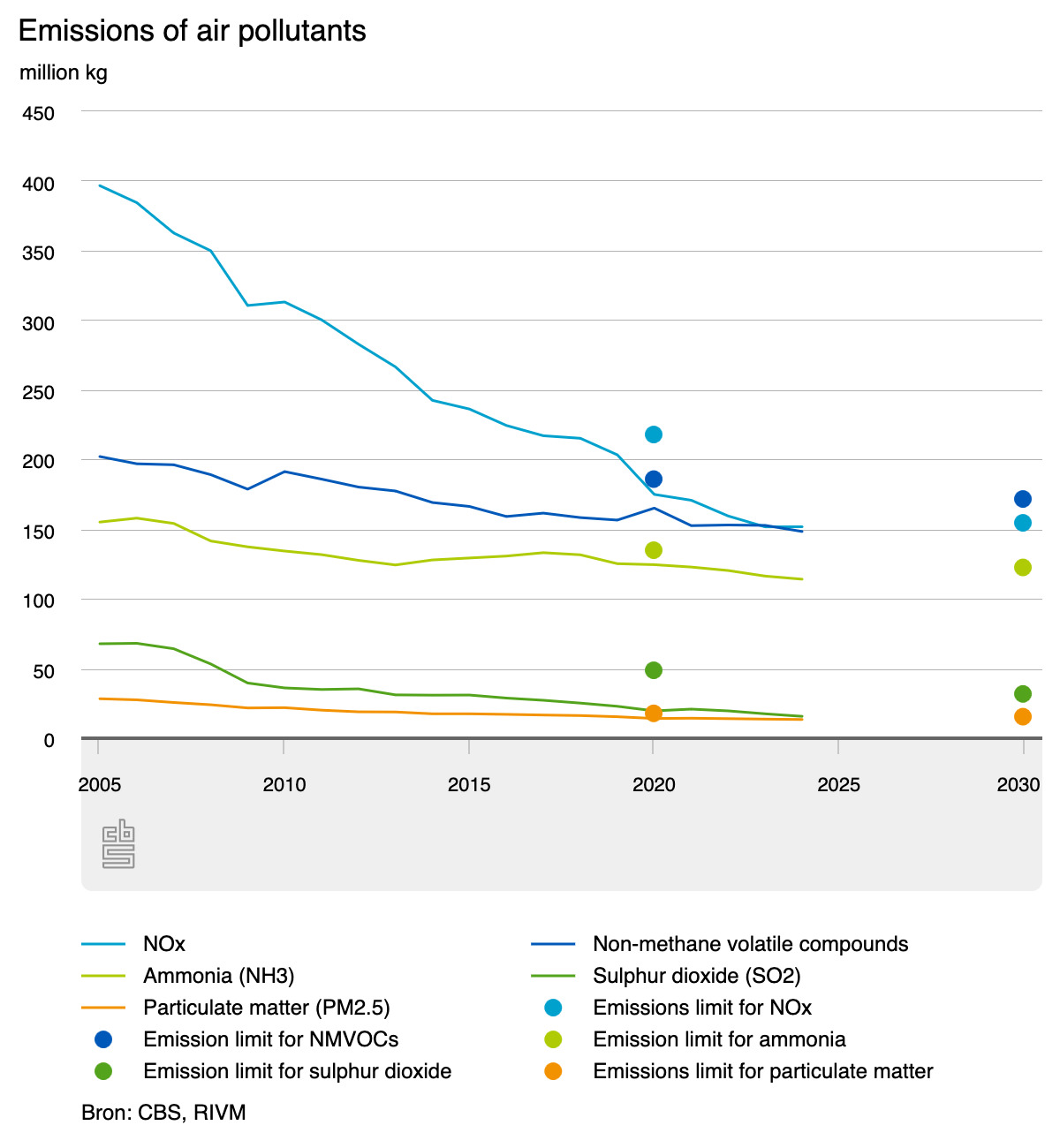Dutch air pollution levels are already below 2030 EU limits

The Netherlands has cut its emissions of harmful air pollutants to below the ceilings that will apply across the European Union from 2030, new figures from the CBS and public health institute RIVM’s emissions register show.
The fall is mainly the result of stricter standards for cars and lorries, which have become much cleaner over the past two decades. Emissions of nitrogen oxides, which are largely produced by transport, were more than 60% lower in 2024 than in 2005.
Air pollutants such as nitrogen oxides and fine particles can penetrate deep into the lungs, triggering asthma and other respiratory problems. Long-term exposure to fine particles is also linked to heart and circulatory disease.
The CBS said emissions of all five regulated pollutants – nitrogen oxides, volatile organic compounds, ammonia, sulphur dioxide and fine particles – have been below the EU’s 2020 limits for several years.
Last year, for the first time, every category also came in under the tighter ceilings set for 2030.
Households are now the biggest source of fine particle emissions, mainly from wood burning in stoves and fireplaces. Although domestic emissions have declined since 2005, the drop in emissions from transport has been far greater thanks to measures such as mandatory soot filters in new cars.
Thank you for donating to DutchNews.nl.
We could not provide the Dutch News service, and keep it free of charge, without the generous support of our readers. Your donations allow us to report on issues you tell us matter, and provide you with a summary of the most important Dutch news each day.
Make a donation